
It’s been nearly ten years since Silent Hill 2 set the bar for the series, largely owing to the work of Takayoshi Sato, who soon after vanished over the Western horizon leaving a faint scent of J.D. Salinger on the air. The game’s presentation and treatment of a psychologically driven narrative has cast a shadow of expectation over every subsequent release, causing a fair amount of confusion concerning the best direction the series might take.
While there has been some experimentation and deviations from the formula, recent entries in the series have suffered trying to meet those expectations, as much a victim of the legacy as any game that becomes a prisoner of previous accomplishments.
So I very nearly let Shattered Memories pass me by, assuming there was nothing a re-imagining of the original Silent Hill could offer, particularly on the Wii.
But since I’ve been forced to reconsider my stance and find myself suggesting the game is one of the most important releases of 2009, we should probably have a chat about it.
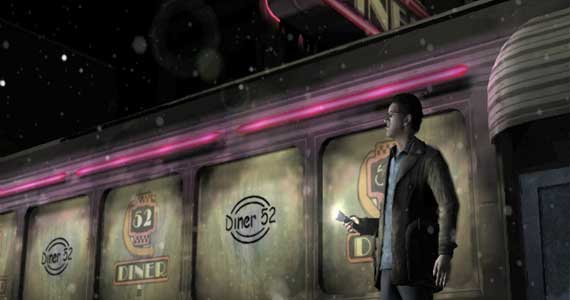
Silent Hill 2 distinguished itself with a mature and often unnerving approach to character development, one which offered insights into the character of James Sunderland not by simply telling the player who he was, but by using Silent Hill as a stage on which to externally manifest the deepest reaches of his identity – the juicy bits few would ever tell, and fewer should ever really want to know. Players were directly confronted by the physical manifestation of his inner most guilt, fears, and desires – lost in a game where resolution of these issues represented the only chance of survival and progression.
Shattered Memories is a game that disregards several of the burdens set upon it by the titles preceding it, bucking any obligation toward placing itself within the fuller context of the series. But it doesn’t reject the responsibility of picking up where that previous approach to character development left off, creating a game where players piece together fragments of an identity in a more personal and intimate way.
The approach is successful, surpassing the cinematic limitations of a game like Silent Hill 2, where the player was still largely a passenger working to understand a character in a compelling but still traditional sense. Shattered Memories instead seizes an opportunity to pull the player ever deeper into the role of the protagonist by making the identity beyond memories our own – or at least convincing us that such a plot is at work within the code.
There’s an aggressive agenda driving Shattered Memories that means to play us – and not just because the game has a warning screen that tells us this.
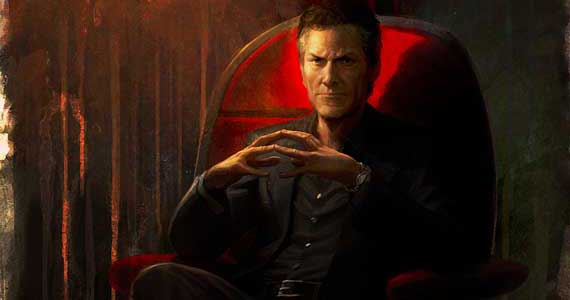
As in the original Silent Hill, Shattered Memories opens with the car accident that leaves Harry Mason looking for his daughter. But the player’s role begins in the first of many therapy sessions, which take place in the office of Dr. Kaufmann. These sessions all occur in the first-person, the player staring at Kaufmann as he discuss issues of relationships, death, sex, and all the delicious fears we push into the deep dark spaces of our subconscious. Sessions also frame the segmented experiences that occur between meetings, and each session is an indication of where the plot is intending to move next.
There’s an initial temptation to see these sessions as an overly simplistic ploy. We’ve been dragged into therapy to allow the game a chance to parade a working knowledge of psychology, because Silent Hill must always deal in the psychological like a currency. But this simply isn’t this case. The first-person perspective feeds the intimacy of the situation as Dr.K talks and asks us to complete tests, but the atmosphere builds through layers of contrary sensations.
These sessions offer a reprieve from the stress of being chased through the streets of Silent Hill, and yet any relief is cut short by an aggressive line of questioning which means to test the limits of what gamers are willing to invest of themselves in a gaming experience. Brushing it off and answering without consideration might influence the rest of the game in ways less genuine to our sense of self, and taking the questions seriously puts the player in an awkward situation – at least it did for this player. I found it incredibly stressful to answer these questions in front of an audience, the probing ranging anywhere from my views on relationships and infidelity to my perception of myself during high school.
The natural expectation is that these answers matter because of the sequences that follow them, conveying an idea that my answers should lead to certain and predictable results. And while this is true, it isn’t a golden rule. At times the significance is immediately apparent in the reactions of a character, while at other times answers affect the physical environment. But the truly unsettling nature of these sessions is the potential to form expectations based on our answers, and the game revels in sometimes leaving us to wonder what our reactions did affect.
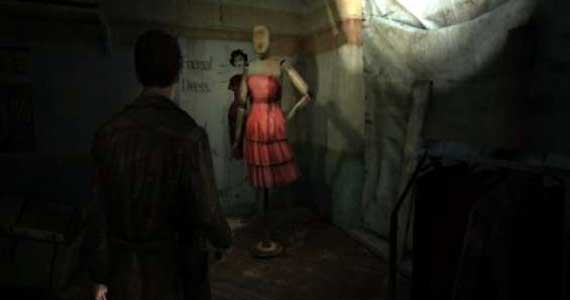
Therapy reinforces the clear psychological preoccupation guiding the entirety of Shattered Memories, the deceptively simple concept that we must shine light on our inner darkness, examining our repression and fears to achieve personal resolution and growth. And while the game offers many abstract means toward this end, it also does a blunt and thorough job of driving this point home by sticking a flashlight in the player’s hand.
Aiming the WiiMote as the flashlight, players wander the cold streets of Silent Hill, which as expected use darkness and snow to cause some slow steps along a linear physical path, the way forward almost always marked and limited to a direct route.
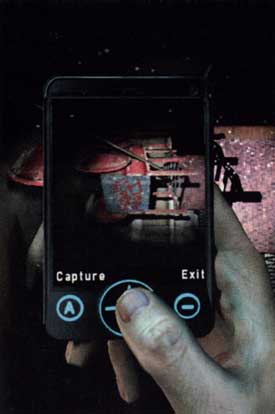
The only other aid players are given is the cell phone, which picks up where other games have left off, but also puts a device in our hands that becomes as much of a lifeline as a device to be feared.
The phone offers a GPS map, text messaging, and camera to aid progression. It also taps the most frightening experience I encountered in the original Silent Hill, when the ringing of a phone and Cheryl’s voice caused me to stop playing for several days.
Here players will experience fragmented messages buried in static, channelled through the WiiMote speaker while the instinct causes one to hold the WiiMote to their ear, changing the focus of the onscreen flashlight and losing the player in darkness.
Simply put, the cell phone constitutes one of the most unnerving encounters in a videogame, as much for the deviant uses it has been given as for the additional tasks it performs.
There’s an unsettling white noise the cell phone generates whenever players near a memory, which exist all over Silent Hill, the static shrieks increasing until they are suddenly revealed with a bang.
Every memory in Silent Hill exhibits the sad, lonely, miserable, depraved memories we’ve come to expect from the series. Players will uncover secrets, frozen moments in time, desires, fears, hopes and dreams – and somewhere along the way the Silent Hill series will be reinvented, saved, and step back into the light through a release that isn’t mature because it revels in adult concepts, but because it treats them with a thoughtful attempt at creating a greater dialogue between those that survive the experience.

The details are at times surprising, the sacrifice of visual high fidelity putting a tighter focus on memories spread throughout the game, working phone numbers, and the continual flow of messages players receive. But let’s get to the point those pretty words hide by stating that Shattered Memories does away with combat. If the idea makes you cringe, have no fear, because the game does not descend into a visual novel.
Atmosphere fills the greatest amount of space, drawing on the series’ legacy for creating environments that slow our steps and revel in the key difference between a horror film and a horror game, that we have to physically commit to moving ourselves forward. The loneliness is at times unbearable, and it presents a different kind of action in an experience that can strike at us as much through aggressive behavior as when it feels like the game has abandoned us to the cold streets.
There’s an inherently slow and unnerving pace to it all while uncovering memories and looking for Cheryl, offset by the nightmare realm, which occurs whenever the search for Cheryl uncovers intense emotional confrontations or causes questions about Harry’s identity to run deeper.
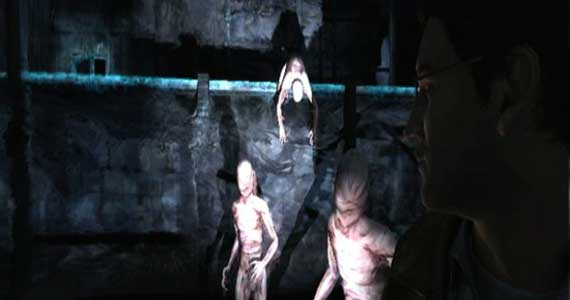
The nightmare sequences cover the environment in ice, the path forward through doors or over ledges suddenly highlighted in blue. Taking the first few steps summons the shrieks of Silent Hill’s long running natives, whom I’ve resorted to calling the “skin freaks.” Because the player has no defensive weapons, the only option is to run, pulling down obstacles and occasionally discovering flares to fight them back while trying to escape.
These skin freaks leap and tackle Harry, trying to pull him down not with the intention of hurting him so much as preventing us from discovering the truth. The most unsettling testament to this idea is when they succeed in pulling Harry down and pet his body, purring as if to lure us to sleep as the screen turns to black – an affection which makes them more terrifying.
This is also the only point where the controls caused any issue. Moving through Silent Hill, players use the WiiMote to center their perspective while using the nunchuk to move forwards or back – but you really need to keep the WiiMote centered on the screen or you’ll have to readjust your perspective. Normally this is a near non-issue, except where the nightmare sequences both very much encourage running, and also require you to throw off your attackers by jolting the WiiMote in the direction they are grabbing at you from. This will often cause your perspective to become misaligned given the way the stress of the situation will really get you tossing that WiiMote, and then running becomes a difficult task, trying to quickly realign your view while more attackers near.
This isn’t a deal breaker by any means, but gave me reason enough to mutter and storm off more than a few times during the game.
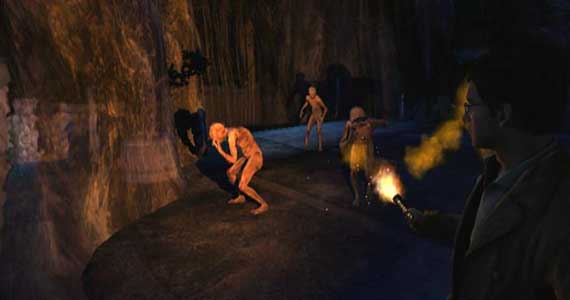
Because the game can switch between exploring Silent Hill, the nightmare realm, and therapy sessions, there’s every reason to expect a formulaic repetition of these sequences throughout the game. And yet the game nearly seems to set this formula in place specifically so it can undue the safety we might temporally find in that repetition, leaving us to spiral through the last half of the game, which not only strives to present the physical manifestations of psychological ideas for the player, but also draws us ever closer to an ending it is absolutely aggravating waiting to discuss – further words are due once the threat of spoiling it for you has time to stretch out to a safer distance.
Here’s a parting thought toward that end, therapy is somewhere between a sanctuary and beacon, hiding an endgame that has left a marked impression on me.
Considering my tastes and interest in gaming, I sometimes get asked why I remain focused on console releases, given the work being done more independently from the market driven end of the industry. At the moment, Shattered Memories allows me to say my focus remains where it is specifically because of titles like this – because I believed that this level of work was possible within a major studio and even under the weight of a well known brand.
This is a reinvention of Silent Hill that evolves the original ideas and meets the challenge of approaching the potential of the Wii console with a radically different spirit from those simply trying to force old experiences onto that audience. That the game also brings us one of the most mature titles to be found on any console is undeniable, dealing with identity and memories as no other game in recent years has even attempted, reaching a conclusion that we’ll be talking about for many more years to come.
Shattered Memories dispels the desire to go home again, proving that while the past may sparkle nostalgically in the rear view mirror, there are still greater destinations to be discovered ahead of us.
Silent Hill: Shattered Memories
Developer – Climax Group
Publisher – Konami
System – Nintendo Wii
Release Date – December 8, 2009
*A copy of this title was provided by the publisher for review
Very good review. I am glad you wrote this. I am actually considering giving this game a try after this review. But it also scares me. Silent Hill has always scared me.
Comment by Orenda Wolfe — January 12, 2010 @ 9:13 am
But the fear is the best part! Nothing beats playing this game at 3am :)
Comment by Jamie Love — January 13, 2010 @ 9:28 am
I think the “control issues” are intentional since, as you’ve noted, our instinct is to put the Wiimote speaker to our ear and loose focus, or to wail rapidly to escape the skin freaks grabbing on to us and therefore panic start creeping it’s way into our game.
One of the games on my “to buy” list after spending too much during december and having to re-budget. Between all the games of 2009 that I couldn’t buy and those in 2010, this will definitely be one of the better years game-wise in a while…
Comment by EdEN — January 12, 2010 @ 1:35 pm